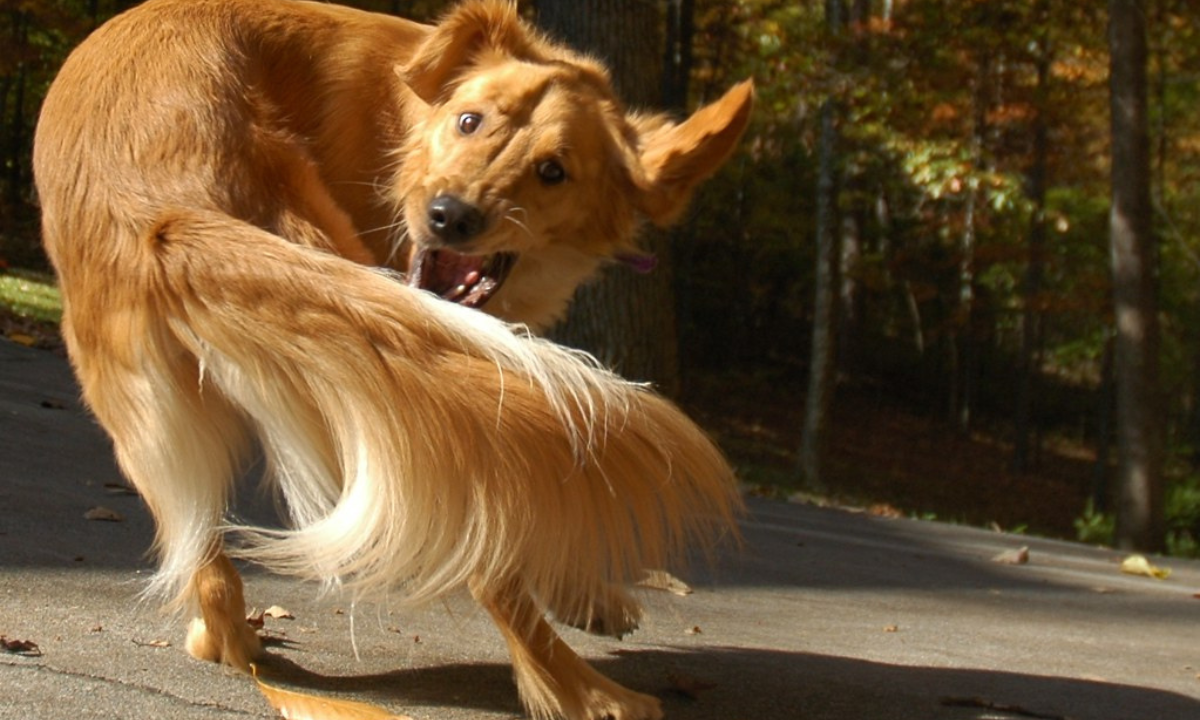Dog behavior never ceases to amaze and entertain us, from their playful antics to their loyal companionship. One behavior that often leaves us both amused and puzzled is tail chasing. Whether it’s a fleeting moment of spinning or a full-blown chase, watching our dogs engage in this activity can spark curiosity about their motivations. In this comprehensive guide, we’ll explore the intriguing phenomenon of tail chasing in dogs, shedding light on the various reasons why our furry friends exhibit this behavior.
Understanding Instincts and Evolution:
To truly grasp why dogs chase their tails, it’s essential to delve into their evolutionary history and instinctual behaviors. Dogs are descendants of wolves, highly intelligent animals with intricate social structures and survival instincts. In the wild, wolves use their tails for communication, signaling their intentions and emotions to pack members. While domestic dogs may not rely on their tails for survival in the same way, they still retain some of these instinctual behaviors, including the occasional urge to chase their tails.
Exploration and Developmental Stages:
Tail chasing often begins during puppyhood, as young dogs explore their bodies and surroundings. Puppies, like human infants, go through developmental stages where they learn to control and coordinate their movements. Chasing their tails can be a playful way for puppies to discover their bodies and develop motor skills. While most puppies outgrow this behavior as they mature, some may continue to engage in tail chasing as a form of play or self-amusement.
Boredom and Excess Energy:
One of the most common reasons why dogs chase their tails is simply because they’re bored or have excess energy to burn. Dogs are highly active animals that thrive on mental and physical stimulation. When left alone for long periods or deprived of opportunities for exercise and play, dogs may resort to tail chasing as a way to entertain themselves and alleviate boredom. Providing your dog with plenty of toys, outdoor activities, and interactive play sessions can help channel their energy in more constructive ways.
Attention-Seeking Behavior:
Tail chasing can also be a means for dogs to seek attention from their owners. Dogs are social creatures that crave interaction and affection from their human companions. If a dog feels ignored or neglected, they may resort to attention-seeking behaviors, such as barking, whining, or, in some cases, tail chasing. While it’s essential to give your dog the attention they need, it’s also crucial to discourage attention-seeking behaviors that may lead to negative reinforcement.
Stress and Anxiety:
Like humans, dogs can experience stress and anxiety due to various factors, including changes in their environment, routine, or social dynamics. Tail chasing may be a manifestation of underlying stress or anxiety in dogs, serving as a coping mechanism to relieve tension or alleviate discomfort. Environmental stressors, such as loud noises, new visitors, or unfamiliar surroundings, can trigger tail chasing behavior in sensitive dogs. It’s essential to identify and address the root causes of stress to help your dog feel more secure and relaxed.
Medical Issues and Physical Discomfort:
In some cases, tail chasing may be a response to underlying medical issues or physical discomfort. Dogs may chase their tails if they’re experiencing pain, itchiness, or irritation in the tail area due to allergies, parasites, or skin infections. Additionally, neurological disorders or injuries can cause dogs to exhibit abnormal behaviors, including tail chasing. If your dog’s tail chasing behavior is accompanied by other symptoms, such as excessive licking, redness, or swelling, it’s crucial to consult with a veterinarian for a thorough examination and diagnosis.
Genetic Predisposition and Breed Traits:
Certain dog breeds may be more predisposed to tail chasing due to genetic factors or breed-specific traits. Breeds bred for hunting, herding, or high energy activities may exhibit more intense chasing behaviors as a reflection of their innate drive and instincts. Additionally, dogs with high prey drives or strong herding instincts may be more prone to fixating on moving objects, including their own tails. While genetics play a role in shaping a dog’s behavior, proper training, socialization, and management can help mitigate undesirable behaviors, including excessive tail chasing.
In conclusion, tail chasing is a multifaceted behavior that can stem from a variety of factors, including instinctual drives, boredom, attention-seeking, stress, medical issues, genetic predisposition, and breed traits. While occasional tail chasing may be harmless and even amusing, persistent or excessive chasing may indicate underlying issues that require attention and intervention. By understanding the motivations behind this behavior and addressing any underlying causes, dog owners can help their canine companions lead happier, healthier lives. If you’re concerned about your dog’s tail chasing behavior, it’s essential to consult with a veterinarian or certified animal behaviorist for guidance and support. With patience, understanding, and proper care, you can help your dog thrive and enjoy a fulfilling bond with your furry friend.
